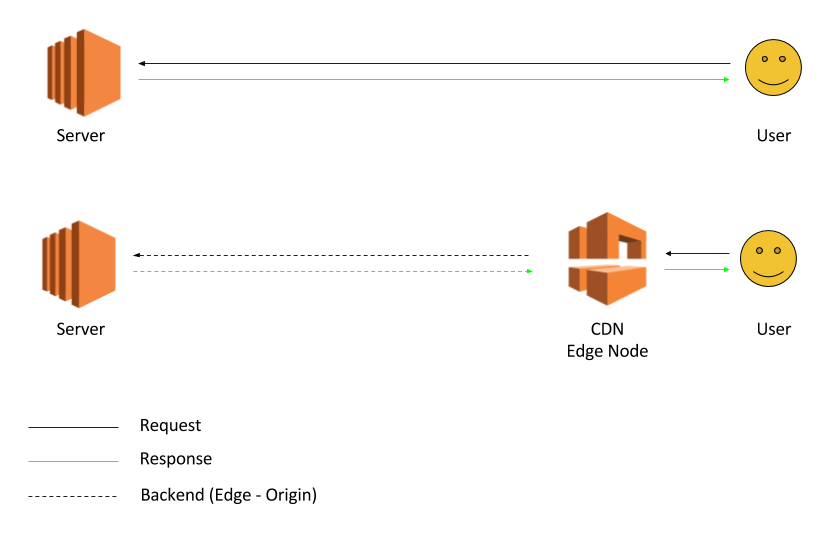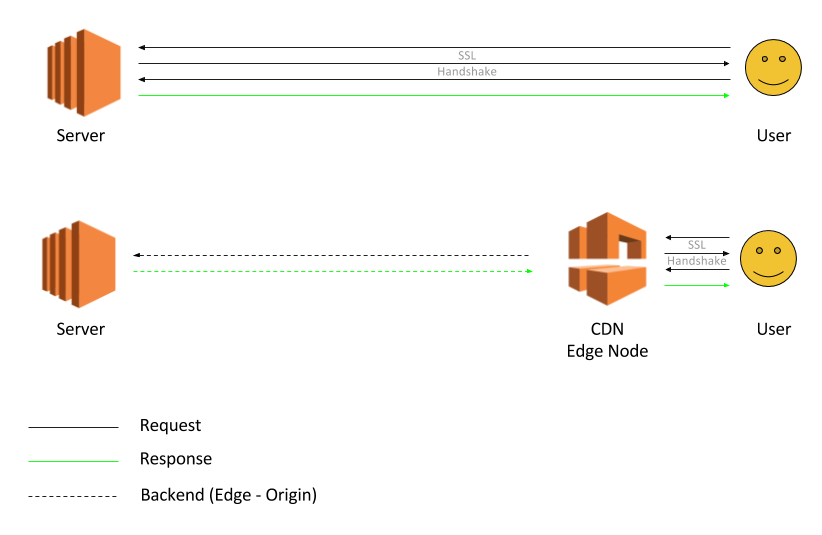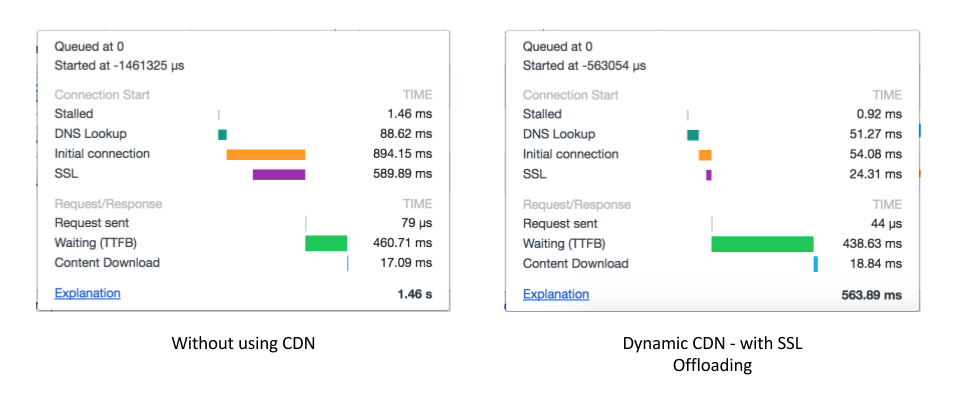Using CDNs (Content Delivery Network) for static content has been a long known best practice and something we have been using across our platform and ad-server. I wanted to share a special usecase where we use CDN (AWS Cloudfront) for serving dynamic requests on our ad-server to achieve subsecond response times.
CDN for Static Content
CDNs employ a network of nodes across the globe called edge nodes to get closer to the user (client browser) and hence are able to reduce the latency and roundtrip delay. Add to this a cache policy at the edge nodes and you are able to serve content gloablly with with acceptable latencies.
Here is how it would look like:

CDNs also come in handy as browsers limit the number of HTTP connections with the same domain - this is anywhere between 2-4 for older browsers and 6-10 for modern. Using multiple CDN sub-domains dynamically helps avoid queing the requests on the browser side.
CDN for Dynamic Content
Using CDN for dynamic content in cases where the response from the server is supposed to be different for every user request is counter intuitive. When it comes to ad-server the response is not only unique by user but also time sensitive. So, caching the dynamic requests of the ad-serving engine is not recommeneded. CDNs that allow supporting dynamic content allow this to be specified in distribution settings or read it from the headers of the response of the origin servers.
Before we get deeper, there is another important consideration - all ad-serving requests are now mandated to be through HTTPS. HTTPS (SSL/TLS) is recommened to protect the security, privacy and integrity of the data but it’s not known to be the fastest off the block. I’m referring to the 3-way handshake which delivers the expected promise of SSL/TLS but adds significant latency while establishing the initial connection. This initial latency can be substantial considering ad-serving performance is measured in subseconds.
By terminating SSL at the edge node of a CDN also called as SSL offloading can speed up initial requests (see realworld results below).
Here is how it would look like:

CDN for Dynamic Content (real-world results)
Theoretically, using CDNs for dynamic content for SSL offloading may look like a minor boost - but when it comes to real world results here is how the results stack up.

This is close to a 900% boost in real world performance for the first request. The results shall vary based the latencies between your user, you origin server and the nearest edge location.
Additional Pointers
We use AWS Cloudfront as our CDN and he are some features which we are able to leverage for subsecond ad deliveries:
- Vast coverage - 98 Edge locations (87 Points of Presence and 11 Regional Edge Caches) in 50 cities across 23 countries
- HTTP/2 support - which takes advantage of miltiplexing (multiple request & response messages between client and server on the same connection instead of multiple connections). Esp. for usecases where multiple assets are required like richmedia ads; the realworld benchmarks were unbelieveable to me and Amrith (possibly a future blog post).
- SSL Session Ticket - to reduce the back and forth for the SSL handshake for subsequent requests.
- Support for gzip compression.
CDNs have become a commodity with the ease and flexibility offered by the public cloud providers like AWS & Microsoft. I feel the recent launch of AWS Lambda@Edge the pormise of the on-demand nature of the cloud and serverless architecture will finally culminate into something bigger.